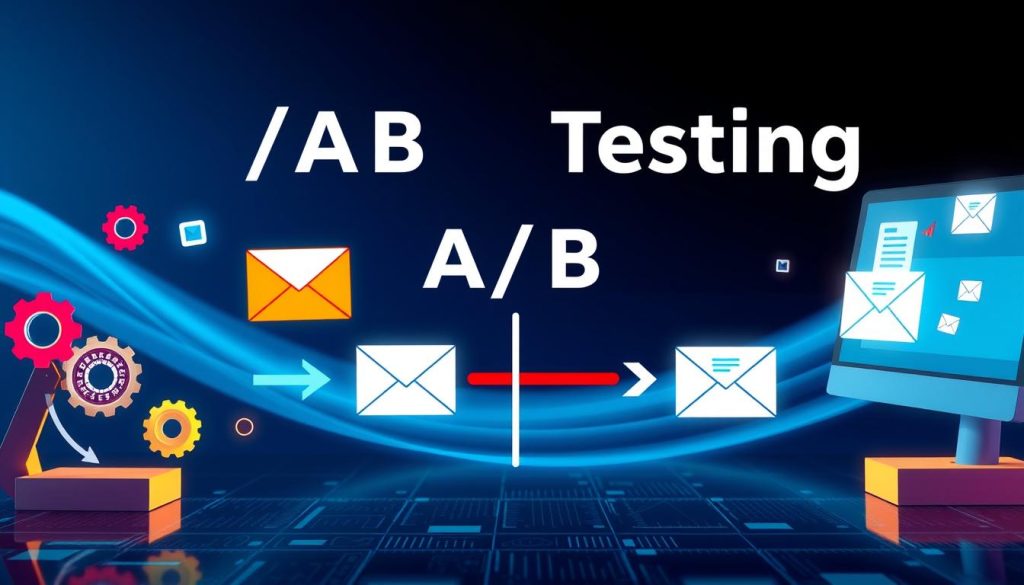In today’s digital world, getting your cold emails seen can be tough. Inboxes are full of messages. This guide will show you how to avoid spam filters. You’ll learn to make sure your emails reach the right people, making your marketing more effective.
Key Takeaways
- Understand the importance of email deliverability and how spam filters work
- Learn best practices for building a clean and compliant email list
- Craft engaging and personalized subject lines to capture attention
- Optimize email content to bypass spam filters
- Enhance sender reputation and authentication to improve deliverability
Understanding Email Deliverability and Spam Filtering
In the digital marketing world, getting your emails to the right people is key. Email deliverability and spam filtering are crucial here. Knowing about these can help you deal with the challenges of email compliance.
What is Email Deliverability?
Email deliverability means your emails get to the inbox, not the spam folder. It depends on your sender reputation, email content, and following best practices.
How Do Spam Filters Work?
Spam filters use smart algorithms to catch unwanted emails. They check the sender’s credibility, email content, and structure. Knowing this can help you make emails that get through.
| Key Factors Affecting Email Deliverability | Tips for Improving Deliverability |
|---|---|
|
|
Understanding email deliverability and spam filtering helps you reach your audience. It keeps your messages out of the spam folder.
“Deliverability is the foundation of successful email marketing. If your messages don’t reach the inbox, your entire campaign is doomed to fail.”
Building a Clean and Compliant Email List
Creating a clean and compliant email list is key to successful cold email campaigns. Following industry rules and keeping your list high-quality helps avoid spam filters. This way, your messages get to the right people. Let’s look at how to build and keep a strong email list that focuses on email list hygiene and email compliance.
Opt-In and Consent
Getting clear consent from your subscribers is crucial for email list building. Make sure everyone on your list has agreed to get your emails. This can be through a form, double opt-in, or clear consent. It’s not just about following the law; it also builds trust with your audience.
Data Verification and Cleansing
Check and validate your email list regularly. Remove any bad or inactive addresses. This keeps your list quality high and boosts email deliverability. Also, think about using email validation services for new contacts.
| Email List Hygiene Practices | Benefits |
|---|---|
| Opt-in and consent management | Builds trust and compliance |
| Data verification and cleansing | Improves deliverability and list quality |
| Regular list maintenance | Keeps your list up-to-date and active |
| Compliance with anti-spam laws | Avoids legal issues and reputational damage |
By focusing on email list hygiene and email compliance, you lay a strong base for your cold email campaigns. This ensures your messages hit the right people and don’t get caught in spam filters.
Crafting Engaging and Personalized Subject Lines
The subject line is key in email marketing. It decides if your message gets seen. Using email personalization and subject line optimization can boost your open rates. This leads to better engagement with your audience.
Tips for Creating Compelling Subject Lines
- Keep it short: Subject lines should be 50 characters or less. Longer ones might get cut off in the inbox.
- Make it personal: Add the recipient’s name or context to make it more relevant and engaging.
- Spark curiosity: Use interesting language or a teaser to make people want to open your email.
- Show the value: Clearly tell the recipient what they’ll get from opening your email.
- Use emojis wisely: Emojis can make your subject line pop, but use them sparingly.
The Importance of Personalization
Personalization is a strong tool in email personalization. Adding the recipient’s name or relevant info makes your email more personal. This builds trust and increases the chance of your email being opened.
“Personalized subject lines are up to 26% more likely to be opened.”
By focusing on creating compelling, personalized subject lines, you can improve your email’s delivery. This boosts your email marketing strategy’s effectiveness.
Avoiding Spam Filters: Best Practices for Cold Email Campaigns
Creating successful cold email campaigns is all about sharing valuable content and reaching your audience. Marketers face a big challenge: dealing with changing email rules and spam filters. Knowing how to avoid spam filters can greatly improve your cold email success.
First, make sure your email list is clean and legal. Your contacts should have agreed to get your emails. Also, keep your list updated to ensure your emails get through.
Personalize your emails. Use subject lines and content that speak directly to each recipient.
- Stay away from words and phrases that spam filters don’t like.
- Use email authentication like SPF, DKIM, and DMARC to look good to email services.
- Send targeted emails to specific groups to boost engagement and delivery.
- Use email automation and A/B testing to keep improving your emails.
By using these best practices, you can get past spam filters and reach your potential customers. Making sure your emails get delivered is key to a successful cold email strategy and achieving your business goals.
“Effective cold email outreach is about delivering genuine value, not just sales pitches. Focus on building relationships, not just generating leads.”

Email Content Optimization for Spam Filters
Making your email content effective is key to getting past spam filters. This means focusing on how you format and structure your emails. Also, avoid using words that might set off spam filters. Doing these things can help your emails get to the right people and be opened.
Formatting and Structure
The way you lay out your email matters a lot. Use a clean design with short paragraphs and bullet points. Clear headings are good too. But, don’t overdo it with bold, italic, or underlined text. Spam filters might see this as trying too hard.
Avoiding Trigger Words and Phrases
Spam filters watch out for certain words and phrases. Words like “free,” “urgent,” and “act now” are often seen as spammy. Instead, aim for content that’s real and adds value. This way, your emails are more likely to connect with your audience.
| Email Content Optimization | Spam Trigger Words |
|---|---|
|
|
By making your email content better and avoiding spam words, you boost your chances of getting past spam filters. This means your messages are more likely to reach the people you want to talk to.
“Crafting email content that avoids spam triggers is a crucial step in ensuring your messages are delivered and read by your target audience.”
Sender Reputation and Authentication
Keeping a good sender reputation and using strong email authentication is key. It helps your emails get delivered and avoids spam filters. Your reputation shows how mailbox providers see your messages.
Building a Positive Sender Reputation
To have a strong sender reputation, follow these tips:
- Send high-quality, relevant content to your subscribers
- Keep your email list clean by removing inactive contacts
- Use email authentication like SPF, DKIM, and DMARC to prove your domain’s legitimacy
- Watch your sender reputation metrics and fix any problems quickly
- Avoid spammy tactics like buying email lists or sending unsolicited emails
By sending valuable content and keeping a clean reputation, you boost your chances of reaching the inbox. You also build trust with your recipients.
| Metric | Description | Desired Outcome |
|---|---|---|
| Spam Complaints | The number of recipients who mark your emails as spam | Low spam complaint rate (less than 0.1%) |
| Bounce Rate | The percentage of emails that are undeliverable | Low bounce rate (less than 2%) |
| Open Rate | The percentage of recipients who open your emails | High open rate (industry average around 20-25%) |
| Click-through Rate (CTR) | The percentage of recipients who click on links within your emails | High CTR (industry average around 2-5%) |
By keeping an eye on these metrics and fixing problems, you can keep a strong sender reputation. This improves your email authentication and helps your emails get delivered better.
Email Segmentation and Targeting
Effective email segmentation and targeting are key to avoiding spam filters. They help your cold email campaigns reach the right people. By dividing your email list into smaller, more precise segments, you can create targeted email campaigns. These campaigns resonate with your audience and boost your email deliverability.
Segmenting Your Email List
Segmenting your email list means categorizing subscribers based on demographics, interests, behaviors, or their stage in the buyer’s journey. This lets you personalize your messages and offer more relevant content. It increases the chances of engagement and conversion.
- Demographic segmentation: Divide your list by factors like age, gender, location, or job title.
- Behavioral segmentation: Group your subscribers based on their past interactions, such as email open rates, click-through rates, or purchase history.
- Psychographic segmentation: Segment by interests, hobbies, values, or pain points.
- Lifecycle segmentation: Categorize leads based on where they are in the sales funnel, such as new subscribers, prospects, or customers.
Targeted Email Campaigns
After segmenting your email list, you can create targeted email campaigns. These campaigns address the specific needs and interests of each group. This personalized approach helps avoid spam filters and boosts the chances of your emails being opened and acted upon.
- Craft subject lines and email content that resonate with each segment’s unique characteristics and pain points.
- Tailor the tone, language, and offers to match the preferences and expectations of each group.
- Automate your campaigns to ensure timely, relevant, and consistent communication with your subscribers.
- Test and optimize your targeted campaigns to continually improve their performance and engagement.
By mastering email segmentation and targeted email campaigns, you can greatly improve your email deliverability. This ensures your messages reach the right people at the right time.
Email Automation and A/B Testing
Mastering email marketing can change the game for your cold email campaigns. Using email automation and email A/B testing can boost your deliverability and engagement. This leads to better results overall.
Email automation makes your outreach smoother. It sends messages at the perfect time to the right people. This means you can focus on other business tasks while automation handles your emails.
Email A/B testing helps you fine-tune your email content and subject lines. By trying out different versions, you find what works best. This way, you grab your audience’s attention and avoid spam filters.
Here are the key benefits of using email automation and A/B testing:
- Send the right messages at the right time for better deliverability and open rates
- Get more engagement and conversions with personalized content
- Save time and scale your email outreach with less effort
- Gain insights to improve your email marketing strategy
Adding these techniques to your cold email campaigns can be a game-changer. By combining automation and A/B testing, you’ll beat spam filters and engage your audience like never before.

“Mastering email automation and A/B testing is the key to unlocking the full potential of your cold email campaigns.” – [Expert Name], Founder of [Company Name]
Email List Hygiene and Compliance
Keeping your email list clean and following the rules is key for cold email success. By following best practices and knowing the anti-spam laws, you can dodge spam filters. This way, your emails will land in the right inboxes.
Maintaining a Clean Email List
To keep your email list in great shape, you need to be proactive. First, check and update your contact info to make sure it’s right. Use a double opt-in to make sure people really want to get your emails. Also, sort your list to reach the right people.
Don’t forget to remove inactive or uninterested contacts. This keeps your delivery rates high.
Compliance with Anti-Spam Laws
It’s vital to know and follow anti-spam laws like the CAN-SPAM Act in the U.S. You must clearly show who you are, give a real address, and make it easy for people to stop getting emails from you. Breaking these rules can lead to big fines and harm your reputation.
Focus on keeping your email list clean and following the rules. This helps your cold emails get past spam filters and anti-spam laws. It lets you reach your audience better and build stronger connections.
Conclusion
In this guide, we’ve covered key strategies for email deliverability and beating spam filters. We talked about creating a clean email list and writing great subject lines. We also discussed how to make your emails engaging.
Keeping a good sender reputation and following anti-spam laws are key. They help your emails get to the right people’s inboxes. Segmenting your list and targeting your campaigns can make your emails more relevant and interesting.
Remember, the path to successful cold email campaigns is always changing. Keep an eye on your results and adjust your plans as needed. By following the best practices we’ve shared and staying up-to-date with spam filtering, you can make the most of email marketing. This will help you connect with your audience in meaningful ways.
FAQ
What is email deliverability and why is it important?
Email deliverability means getting your emails to the right inbox. It’s key because unread emails don’t work. This makes your email marketing less effective.
How do spam filters work, and what factors do they consider?
Spam filters check emails for legitimacy. They look at the sender’s reputation, content, and how it’s formatted. Things like bad language or too many images can set off alarms.
What are the best practices for building a clean and compliant email list?
Get people’s clear consent before adding them to your list. Keep your list up to date and follow anti-spam laws. This keeps your emails out of spam folders and keeps your reputation good.
How can I create compelling and personalized subject lines that bypass spam filters?
Make your subject lines grab attention. Use personal touches and avoid spam words. Try different versions to see what works best.
What are the best practices for optimizing email content to avoid spam filters?
Use good formatting and avoid spam words. Don’t overdo images and attachments. Make sure your content is valuable to the reader. This helps your emails get through.
How can I build a positive sender reputation and implement email authentication protocols?
Send quality content regularly. Use SPF, DKIM, and DMARC to prove your emails are legit. This boosts your deliverability and keeps your reputation strong.
How can email segmentation and targeted campaigns help with avoiding spam filters?
Segment your emails for better relevance. Personalized messages lead to more engagement and less spam. Tailor your content for each group to improve your cold email success.
What are the benefits of using email automation and A/B testing?
Automation and A/B testing make your emails better. They help you find what works best. This means your emails are more likely to get through and be read.
How can I maintain a clean email list and ensure compliance with anti-spam laws?
Keep your list clean by removing inactive subscribers. Follow anti-spam laws like CAN-SPAM and GDPR. This keeps your emails out of spam and protects your reputation.


